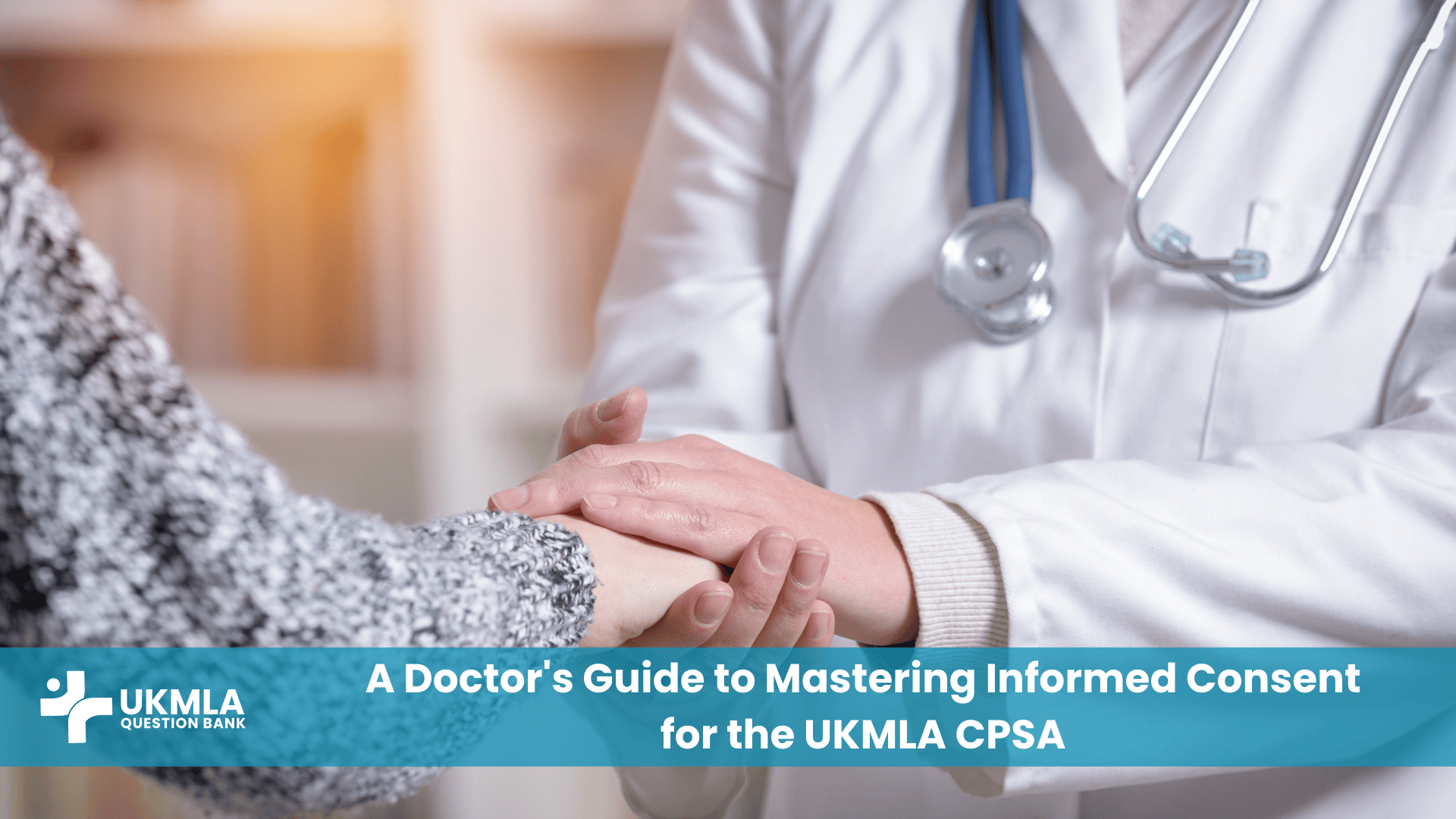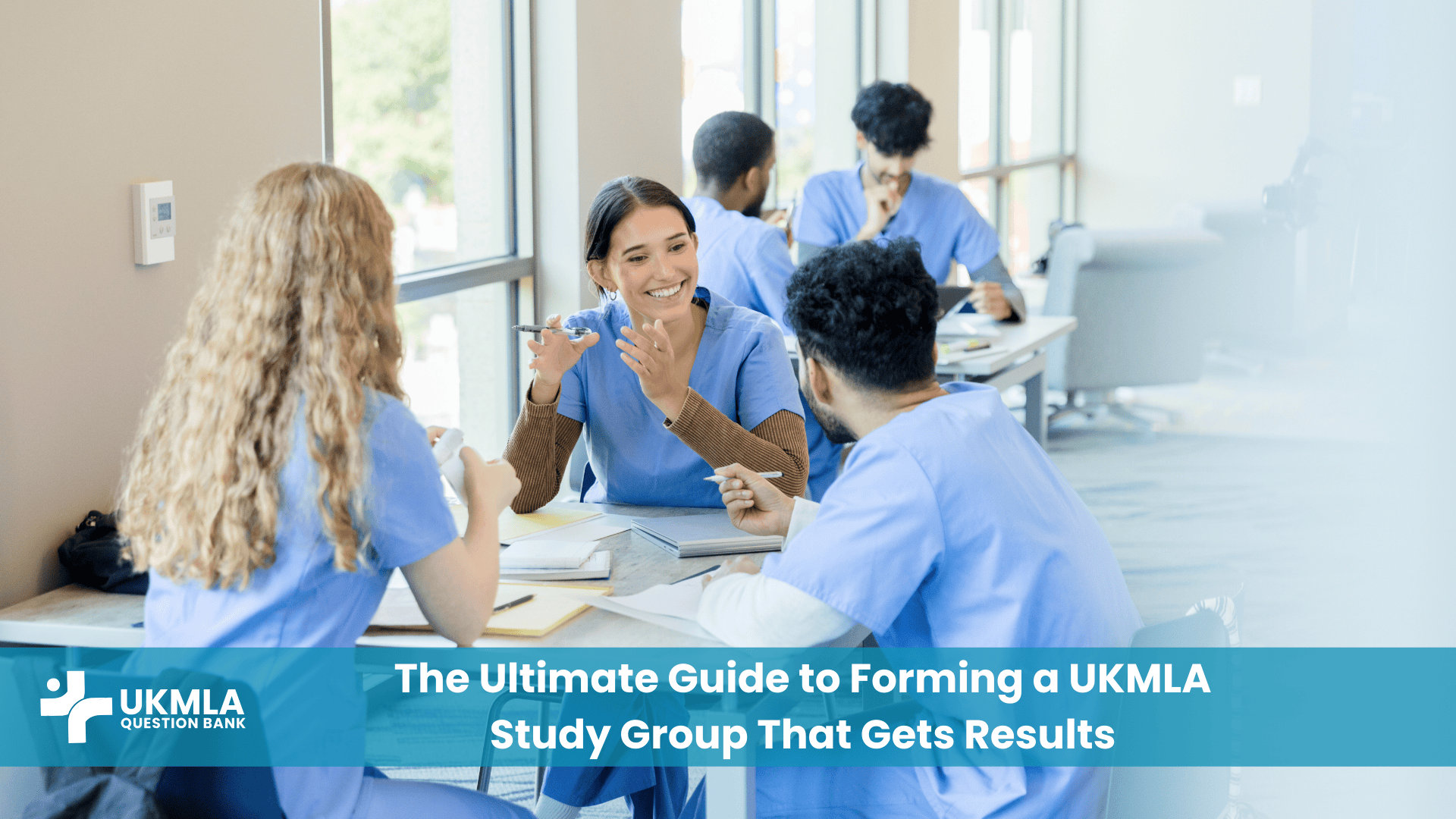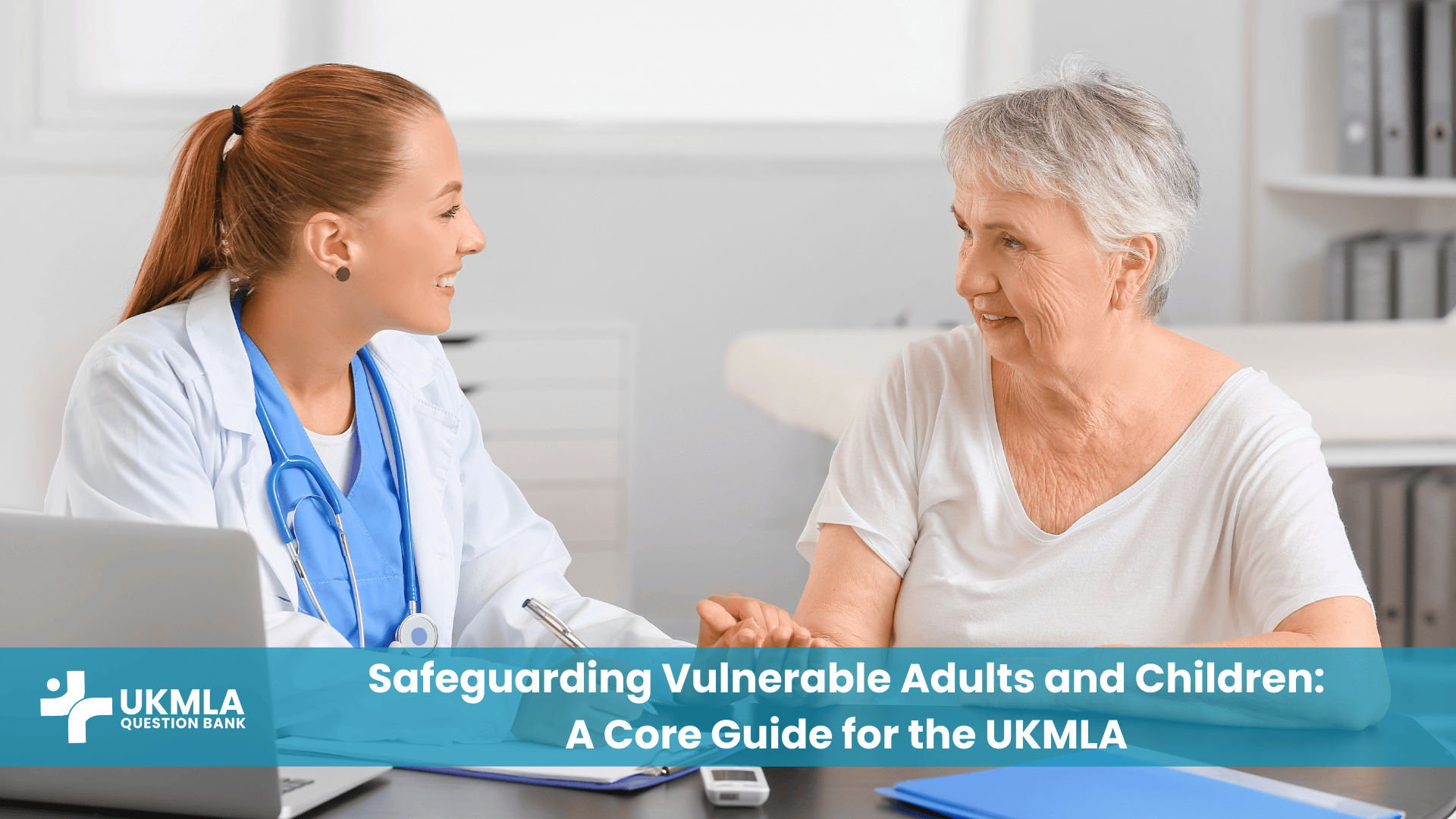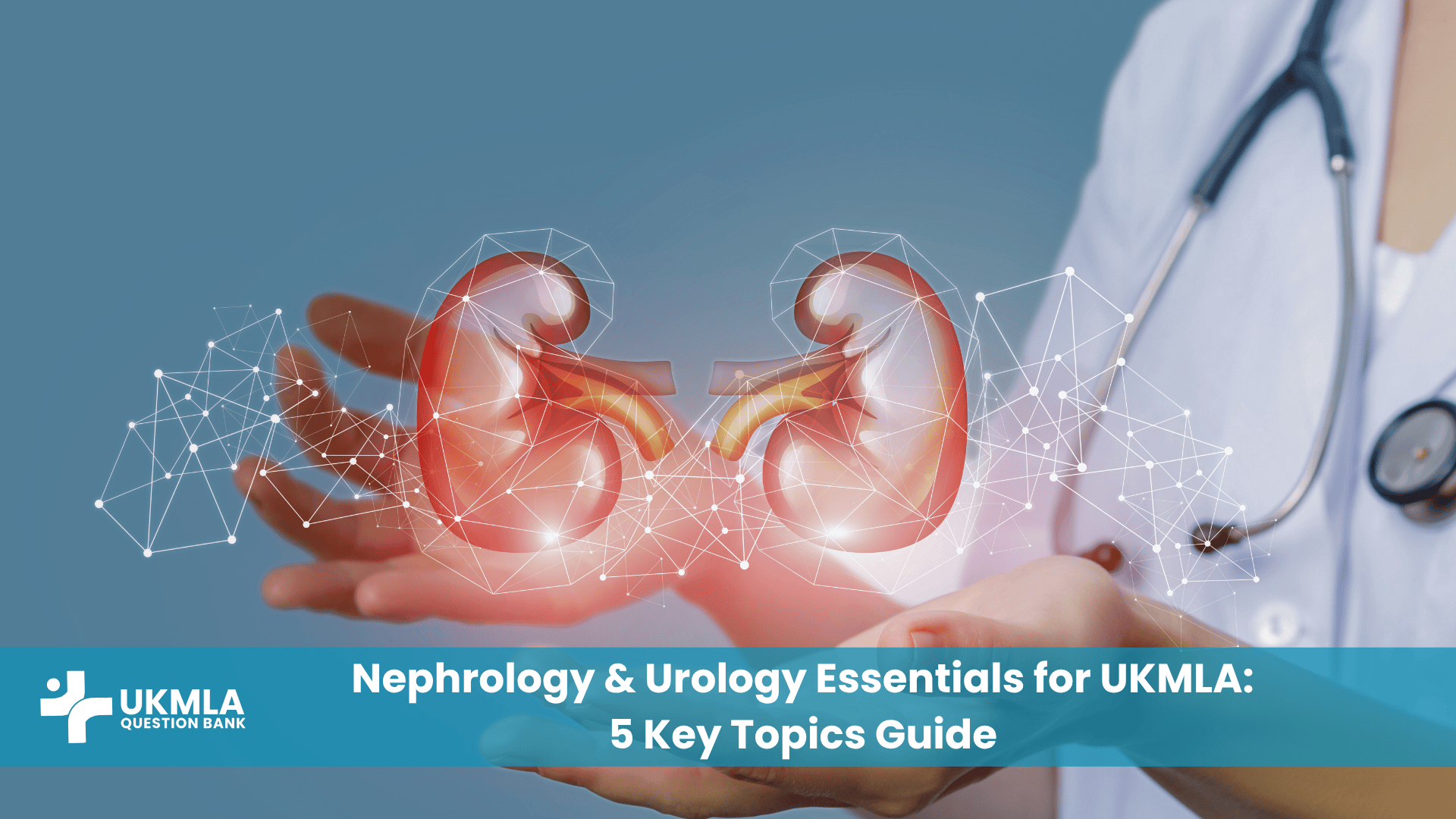Introduction
Mastering the GMC informed consent guidelines is fundamental to a medical career in the UK. This is not just about ticking a box; it’s about building a therapeutic alliance and demonstrating patient-centered communication. A strong grasp of this topic will not only earn you high marks in the UKMLA CPSA but will also set you up for a successful career as a safe and ethical doctor.
This guide will walk you through a clear, step-by-step approach to gaining valid informed consent, aligning every action with the principles expected by the GMC. We will cover the essential legal and ethical frameworks, dissect the process in a UKMLA-ready format, and provide real-world insights to help you navigate this high-stakes station with confidence.
Table of Contents
ToggleThe Core Principles of Informed Consent for UKMLA
At its heart, consent is about partnership. It is a process, not a one-time event, where a patient freely and voluntarily agrees to a specific treatment, test, or procedure. For UK medical students and junior doctors, the legal and ethical principles governing this process are paramount.
What is Valid Consent?
For consent to be considered valid, three core requirements must be met:
-
Voluntary: The decision must be made by the person themselves, free from pressure or influence from others. This means the patient must not be coerced, intimidated, or unduly influenced by a doctor, family member, or anyone else. Their decision must be their own.
-
Informed: The person must be given all the relevant information in a way they can understand, including the benefits and risks of the proposed treatment, as well as the alternatives. This includes communicating in simple, non-technical language and ensuring the patient has the opportunity to ask questions.
-
Capacity: The person must have the mental capacity to make the decision. According to the Mental Capacity Act 2005, a person is assumed to have capacity unless proven otherwise. Capacity is decision-specific, meaning a person might have capacity to decide on one procedure but not another.
A valid consent station in the UKMLA will assess your ability to address all three of these pillars, demonstrating a comprehensive understanding of the ethical and legal foundations of your practice.
Consent is not a signature on a form, but a shared process of decision-making between doctor and patient.
The Ethical and Legal Foundation
Consent is rooted in the ethical principle of patient autonomy—the right of an individual to make their own decisions. The GMC’s ethical guidance, Good Medical Practice, underpins all aspects of UK medical practice. It outlines the doctor’s duty to be open, honest, and respectful of a patient’s right to make their own choices, even if those choices seem unwise. Your role is to provide the information; the patient’s role is to decide. To learn more about this, check out our guide on UKMLA Medical Ethics and Law.
The GMC Informed Consent Guidelines: A Practical Breakdown
The GMC’s guidance is not just theoretical; it’s a practical framework that defines your professional duty. As the official GMC guidance on Consent states, “The exchange of information between doctor and patient is central to good decision-making.” You are expected to demonstrate this exchange in every interaction.
The 4-Pillar Framework
The GMC’s guidance is best understood through four key pillars:
-
Shared Decision-Making: This is about working with the patient as a partner, not simply telling them what to do. You must explore their views, values, and concerns, treating them as an active participant in their own care. This approach acknowledges that a patient’s decision is influenced by their personal beliefs, lifestyle, and priorities, which may be different from purely clinical considerations.
-
Giving Information: This goes beyond just listing risks and benefits. It’s about tailoring information to the individual patient’s needs and using language they can understand. You must explain the proposed treatment, its purpose, the potential benefits, and the risks involved. It is also crucial to discuss all reasonable alternatives, including the option of not having any treatment at all, and the likely consequences of each choice.
-
Checking Understanding: You have a responsibility to confirm that the patient has understood the information and is able to use it to make a decision. This requires more than a simple “Do you understand?” which often elicits a passive “yes.” Instead, use teach-back methods, asking the patient to repeat back key information in their own words or asking open-ended questions to probe their comprehension.
-
Documentation: Clear, accurate, and timely documentation of the consent process is a professional duty. This includes recording what was discussed, the patient’s decision, and any specific concerns or questions they raised. This protects both the patient and the doctor.
In my own experience from my clinical placements, I have seen how a simple statement can clarify everything. One consultant I worked with would always say, “I am going to talk to you about the surgery, but please know that this is your decision. My job is to give you all the information so you can decide what’s best for you.” This simple act immediately establishes a shared, patient-centered approach.
Step-by-Step Approach for Gaining Informed Consent in a CPSA Station
This is the UKMLA-ready protocol to follow in every consent station.
Step 1: The Introduction & Establishing Rapport
Begin by introducing yourself and your role and clearly state the purpose of the consultation. Use open-ended questions to invite the patient’s perspective, for example: “What have you been told so far about this procedure?” or “What are your initial thoughts about this?” Building rapport early on is essential to create a safe space for an open and honest discussion. Your demeanor should be calm and reassuring.
Step 2: Sharing Information (The “Tell” Phase)
This is the core of the consent conversation. You must systematically explain the relevant information in a structured, easy-to-understand manner. Start with the diagnosis and why the procedure is being proposed. Explain the procedure in simple terms, using analogies if necessary. Cover the benefits, risks, and alternatives. Always include the option of “doing nothing” or not having the procedure at all. It is helpful to structure this part of the conversation using the following table:
Table 1: Key Information to Disclose
| Topic | Key Details to Explain |
|---|---|
| Diagnosis | What is the medical problem? |
| Proposed Procedure | What is it? What does it involve? |
| Benefits | How will it help the patient? |
| Risks | What are the common, less common, and serious risks? |
| Alternatives | Are there other options? (e.g., medication, observation) |
| Doing Nothing | What happens if the patient does not proceed? |
Step 3: Checking Understanding (The “Ask” Phase)
This is a critical step where you demonstrate active listening and patient-centered care. Use open-ended questions to assess comprehension and invite the patient to share their thoughts and concerns. For example, “Could you tell me what you’ve understood so far about the procedure?” or “What are your main concerns at this point?” This method is far more effective than simply asking “Do you have any questions?” It allows you to identify and correct any misconceptions they may have.
Step 4: Confirming Consent
Once you are satisfied that the patient has fully understood the information and has had time to consider all their options, you can ask for their decision. A simple, direct question works best: “Based on everything we’ve discussed, what would you like to do?” If the patient verbally consents, confirm this clearly: “So, you would like to proceed with the procedure?” It is also good practice to confirm that they understand they can change their mind at any time.
Step 5: Documenting the Discussion
Even if not in an exam, always document the conversation thoroughly. This is a critical part of a doctor’s professional duty. In a real-life scenario, a consent form would be signed, but in the exam, your clear and structured approach is what is being assessed. Documentation should include the information provided, the patient’s understanding, their decision, and any specific questions or concerns they raised.
Common Challenges and Ethical Dilemmas
A UKMLA station may throw a curveball. Be prepared to handle complexities with confidence by demonstrating a nuanced understanding of these challenging scenarios.
Capacity and Consent (The Gillick Competence)
When dealing with a child under 16, you must assess their capacity to make the decision. The concept of Gillick competence means a young person can consent if they have sufficient maturity and intelligence to understand the proposed treatment. The assessment is an ongoing process, and you should always seek to involve the parents or guardians as well, unless doing so would put the child at risk.
Dealing with Relatives and Patient Wishes
Always respect patient confidentiality. Information should only be shared with relatives if the patient has given express consent. In the exam, a simple statement like, “Thank you for being here, but I must ask the patient directly to protect their confidentiality,” shows excellent professionalism. If a relative is pressuring the patient, you must act as the patient’s advocate, ensuring their decision is voluntary and free from coercion.
Consent in Emergency Situations
The principle of necessity allows treatment to proceed without consent in an emergency where the patient is unable to give it and a delay would risk serious harm. You must act in the patient’s best interest. However, once the patient regains capacity, you must explain what has happened and seek retrospective consent for the care provided. This demonstrates respect for their autonomy.
The Anatomy of a High-Scoring UKMLA Station
Examiners are looking for more than just a checklist. They are looking for a doctor who is safe, empathetic, and professional. Your performance is a reflection of your potential as a future clinician.
How Examiners Assess Your Skills
Your score is based on your communication skills, your application of knowledge, and your professionalism. You will be marked on how well you tailor information to the patient, how you handle their emotional response, and how you adapt to complex scenarios. Your ability to demonstrate empathy and respect for patient autonomy will be a key differentiator. For more tips, read our guide on How to Pass the UKMLA.
Demonstrating Empathy and Professionalism
Start with empathy. Acknowledge the patient’s anxiety and use phrases like: “This must be a lot to take in.” Maintain a calm, professional demeanor and a reassuring tone throughout the station. Your professionalism is being assessed as much as your knowledge. Remember to use appropriate body language, maintain eye contact, and sit at a similar level to the patient to signal that you are their partner in the decision-making process.
Frequently Asked Questions (FAQ) about Gaining Informed Consent
Informed consent is the process where a patient voluntarily agrees to a medical procedure after receiving and understanding all the relevant information. It is crucial for the UKMLA as it tests a core communication and ethical competency outlined by the GMC.
Yes, valid consent is a legal and ethical requirement for all medical interventions, no matter how minor. The only exception is in an emergency situation where the patient is unable to consent and a delay would cause serious harm.
If a patient with capacity refuses treatment, their decision must be respected, even if you or their family disagree. Your role is to ensure they are fully informed of the risks of refusal. This is a key principle of patient autonomy.
Consent is the legal agreement given by a person with capacity. Assent is the agreement from a person who lacks capacity to consent, such as a child, after being given an age-appropriate explanation. While not legally binding, seeking assent is an important ethical practice.
A patient is assumed to have capacity unless proven otherwise. Capacity is decision-specific, so you must assess if they understand the information, retain it, use it to make a decision, and communicate that decision.
No, you do not need to use a physical form. The examiner is assessing your communication process. Your structured conversation is what matters, not a piece of paper.
Use simple analogies, avoid technical terms, and ask the patient to summarize their understanding in their own words. This is a form of patient-centered communication.
In the UK, most NHS treatments are free at the point of use, so discussing costs is usually not necessary. However, it’s good practice to clarify this if a patient asks.
Your responsibility is to ensure the patient is informed. Oral communication is just as valid as written, as long as you have evidence the patient understands.
You can find the official guidance on the GMC’s website. It is essential to refer to the official document for your revision.
Conclusion: Beyond the Exam Room
Mastering informed consent is not just about passing an exam; it’s about becoming a safe, ethical, and compassionate doctor. The ability to engage in shared decision-making and apply the GMC informed consent guidelines is a skill you will use every day of your professional life. By following this guide, you will not only be ready to ace your UKMLA CPSA station but also to build the foundation of trust and respect that defines a successful medical career. Remember, the consent process is your first opportunity to show your patient that they are not just a case, but a partner in their own care.



